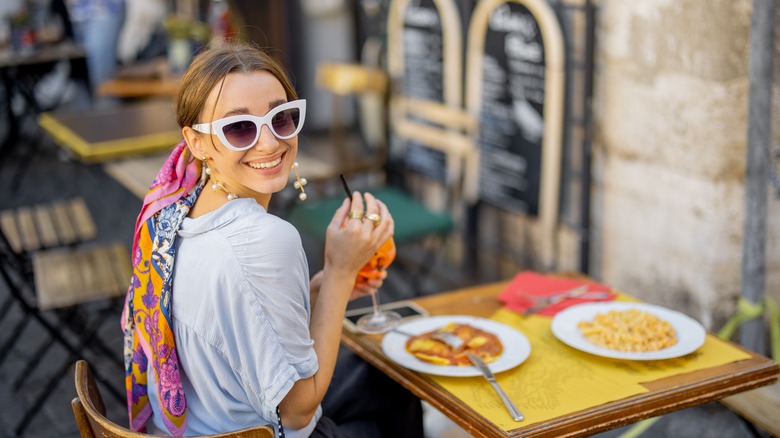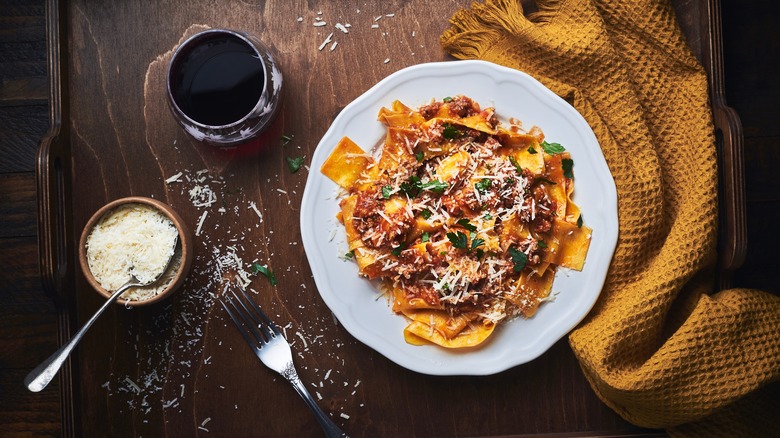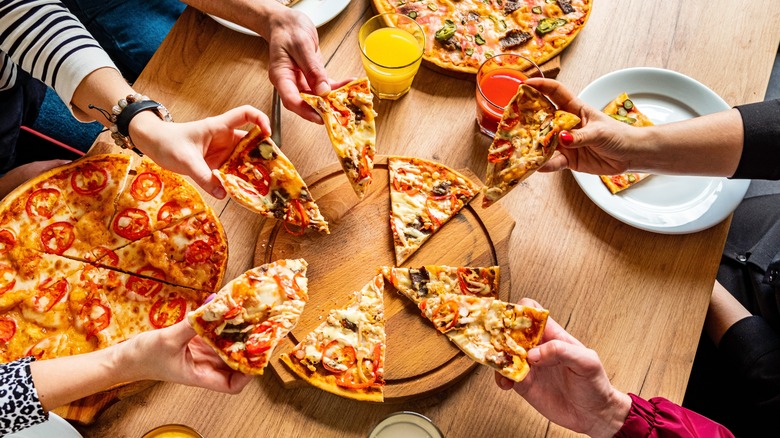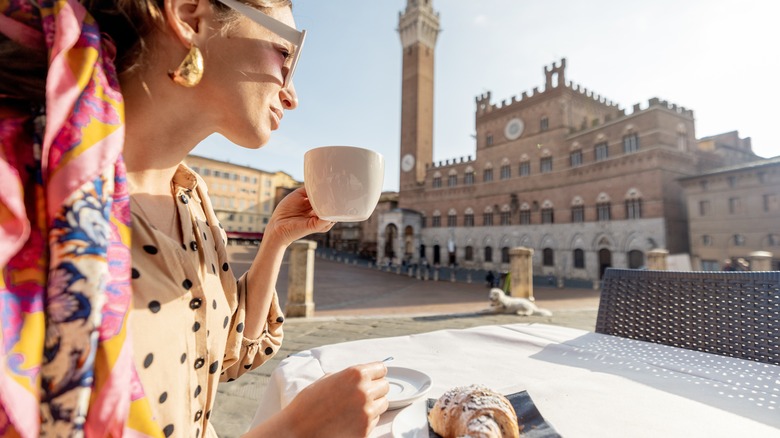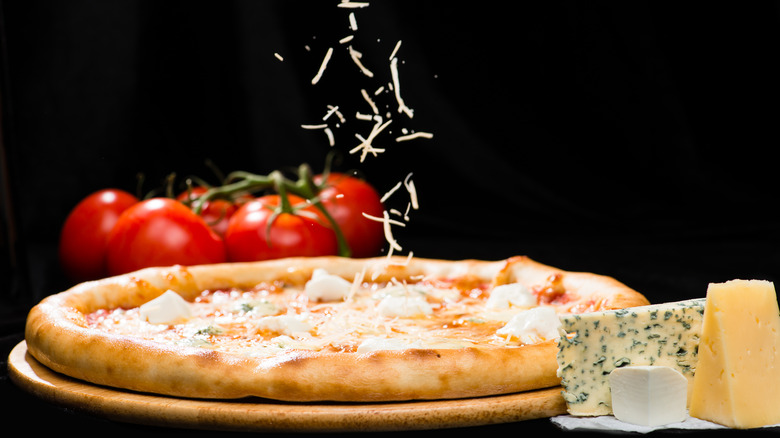Don't Make These Common Mistakes At Italian Restaurants
With its rich history and exquisite cuisine, Italy attracts tourists from all over the world. The number of people visiting this amazing country hit an all-time high of 64.8 million in 2019, reports CEIC Data. Some people go for the great food and wine, while others want to enjoy the beautiful countryside or immerse themselves in cultural activities. But no matter your reason for visiting Italy, it's important to follow some basic rules when dining out.
Food is an experience in itself for most Italians, and you should treat it as such. Take pizza, for example. Originally a food for the poor, this popular dish has become a symbol of Italian cuisine over the centuries. According to Fine Dining Lovers, the world-famous Neapolitan pizza has only four ingredients: mozzarella, tomatoes, basil, and olive oil.
Similarly, other so-called Italian dishes, such as Fettuccine Alfredo, have origins in Italy but aren't commonly served in Italian restaurants. Plus, the American version is very different from the original recipe, notes Matador. With that in mind, here are some common mistakes to avoid when dining in Italy.
Ordering pasta as a side dish
Most Americans will serve pasta with meatballs, tuna, salmon, or even steak, but that's not the case in Italy. Traditionally, pasta is a main course in Italian cuisine, according to Mavi Trade. Just think about spaghetti alle vongole, lasagne alla Bolognese, tortellini in brodo, ravioli al salmone, and other classic dishes. They're filling enough to be served by themselves and typically include some source of protein, such as parmesan, seafood, or ground meat.
As a rule of thumb, you should never ask for pasta with ketchup. It's one of the most controversial ways people use ketchup, and you might end up getting weird looks from the restaurant staff. Also, remember to eat pasta with a fork, not a spoon, and don't use a knife to cut it into smaller pieces (per More Time to Travel).
Last but not least, forget about spaghetti and meatballs; it's an American dish you won't find anywhere in Italy.
Sharing your meal with others
With a few exceptions, it's not common practice to share your meal when dining at an Italian restaurant. You may find your pizza too filling or too big to eat it all by yourself, but that doesn't mean it's okay to share it with a friend or partner (unless you're eating out with your kids), says Frommer's. Some places may serve half portions, too.
On a similar note, avoid ordering just one dish. In Italy, a full meal includes several courses, beginning with antipasto, or appetizers, and ending with dessert, explains Bertolli. Generally, antipasto is followed by a light meal, such as broth, soup, or risotto. After that, you are expected to eat the main course, which may consist of meat, fish, or vegetable dishes, followed by a fourth course that usually includes salad, green beans, grilled eggplant, or other side dishes.
As far as dessert goes, your best bet is to order a classic favorite, such as tiramisu, gelato, canestrelli, or zuccotto, for an authentic Italian dining experience. Speaking of tiramisu, the recipe may vary from one restaurant to another, so you might want to ask about the ingredients used before placing your order.
Eating eggs for breakfast
While it may be tempting to start your day with bacon, eggs, and cheese, it's better to save this option for when you return home. Most Italians prefer to have something sweet for breakfast, such as fruit tarts, croissants, or muffins, according to the Italian Sons & Daughters of America. They might also drink coffee or orzo, a caffeine-free beverage made with roasted barley.
Wendy Holloway, an American expat living in Italy, says that eggs are usually served for dinner. Sometimes, they're used as an ingredient in pasta carbonara, tiramisu, frittata, and other dishes served during lunchtime. Also, note that a typical Italian breakfast is light and small (which makes sense considering the number of courses served for lunch).
Frommer's points out that breakfast is also the best time of the day to order a cappuccino. Italians normally drink this beverage before 11 a.m., not after they eat dessert or later in the day. However, regular coffee is a good choice anytime, and you won't get any weird looks if you order one after finishing dinner.
Putting cheese on everything
As Penn State puts it, cheese might be America's favorite food. The truth is, this versatile ingredient makes everything taste better. Think about cheese toasts, crab fondue, mozzarella sticks, white pizza, and other delicious recipes for cheese lovers. Life simply wouldn't be the same without them.
Cheese is widely used in Italian cuisine as well, but that's not an excuse to put it on pizza, pasta, or just about anything you eat. "Requesting grated parmesan on every dish is a huge faux-pas," Chotto Matte head chef Jordan Sclare said to The Independent in 2017. "An Italian would never put parmesan on crab linguine or shrimp tagliatelle."
As a general rule, don't ask for extra cheese unless the server mentions it. Some dishes, such as pizza and spaghetti carbonara, already have this ingredient in their composition, and adding more of it can mask their flavor. Plus, it's not typical for Italians to combine cheese with seafood, and the server may decline your request (or at least roll his eyes at you).
